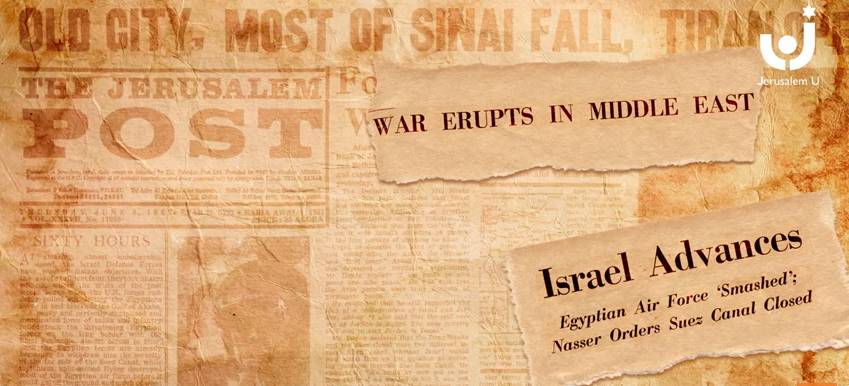Israel 50 Years Ago Today Part 5 & 6
Today, Israel went to war. In the fifth video of our 12-part mini-series, find out how big of a danger Israel really faced. With 200,000 Arab troops massing near its borders, Israel realized war was coming. What Israel did next has become one of the most talked-about actions in the history of warfare.
In the early morning hours of June 5th, 1967, Israel launched a surprise preemptive aerial strike on Egyptian air force bases. Using almost every one of Israel’s military jets, the Israeli Defense Forces set out to fight for Israel’s survival.
PART 5
Israel, acting in response to Egypt’s ongoing provocations, all but 12 of Israel’s military jets took off, flying low to avoid radar detection and observing complete radio silence. They bombed and incapacitated the runways of 11 Egyptian air force bases, as well as the aircraft on the ground.
In just four hours, Israel demolished two thirds of the entire Egyptian air force, the largest in the Arab world.
Israel then issued a final offer to Jordan: if you stay out of the war, Israel will not retaliate – even though that meant that the Temple Mount in Jerusalem and other Jewish holy sites would remain under Jordanian control.
But Jordan had received disinformation from Egypt, claiming massive, successful attacks inside Israel, and Jordan joined the war against Israel.
Thousands of mortar shells rained down on Jewish areas in Jerusalem, hitting civilian locations including Hadassah Hospital and Mount Zion church. Controlling the highlands of the West Bank, Jordan easily shelled civilian targets all the way to Tel Aviv and carried out airstrikes against the coastal cities of Netanya and Kfar Saba.
Syria and Iraq also joined the war, targeting Haifa’s oil refineries and Jewish communities beneath the Syrian-controlled Golan Heights.
Israel retaliated and attacked Jordanian, Syrian, and Iraqi air bases. Stretched thin in a war on three fronts – Egypt in the south, Jordan in the east, and Syria in the north – it would soon be clear whether Israel’s military would hold, or break.
Like the Six Day War Project on Facebook: https://www.facebook.com/sixdaywarpro…
PART 6
In the sixth video of our 12-part mini-series, learn what prevented Israel from firing on the Jordanian army in Jerusalem on the second day of the war. Israeli troops had begun approaching the Old City of Jerusalem – the soldiers waited to find out what would happen at Judaism’s most holy site.
Israel had succeeded in destroying two thirds of the Egyptian air force just the day before. Now, on June 6, the Israeli Defense Force engaged Egyptian tanks and troops in the Sinai. In another remarkable feat, Israel defeated Egypt in the desert, despite being outnumbered three-to-one. Egypt, seeing the extent of their loss, retreated, leaving the Sinai Peninsula in Israel’s hands. By noon the next day, Israel would control the port at Sharm El-Sheikh, reopening the sea lanes Egypt had blocked just two weeks before.
Meanwhile, Israeli troops were positioned on the strategic mountaintop of Mount Scopus in Jerusalem, overlooking the historic Old City. Though Israel could have pounded Jordanian troops with artillery, it refrained in order to preserve the city which held such significance for the Jewish people.
In an emergency session at the United Nations in New York, Israel’s Foreign Minister Abba Eban held Egypt to task for its aggression against Israel, also heralding the great success Israel had so far in resisting that aggression.
In Israel, Prime Minister Levi Eshkol turned to the Soviets for assistance in securing peace. Yet the Soviets remained cold to Israel’s request, issuing a demand that Israel “immediately and unconditionally” halt all military operations.
This was a path Israel could not afford to take. The war would continue.









